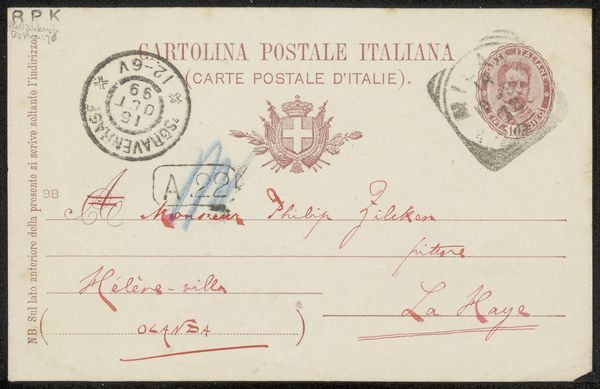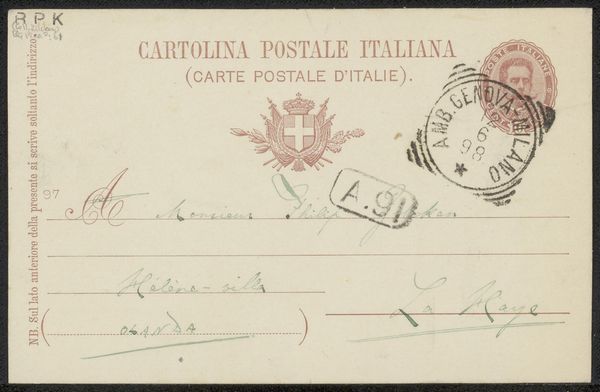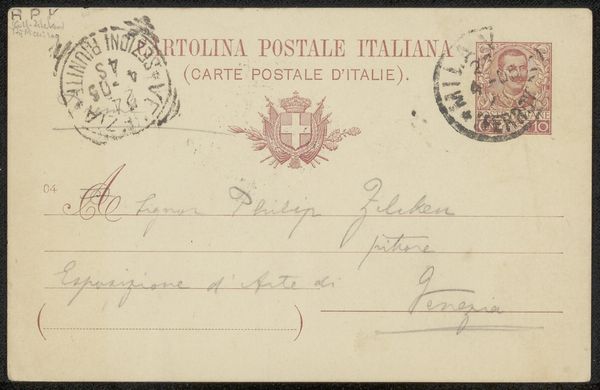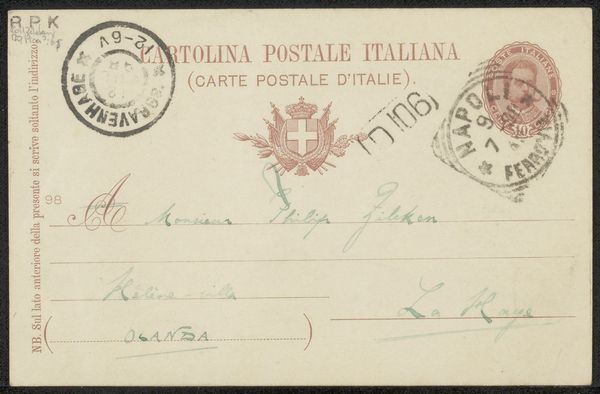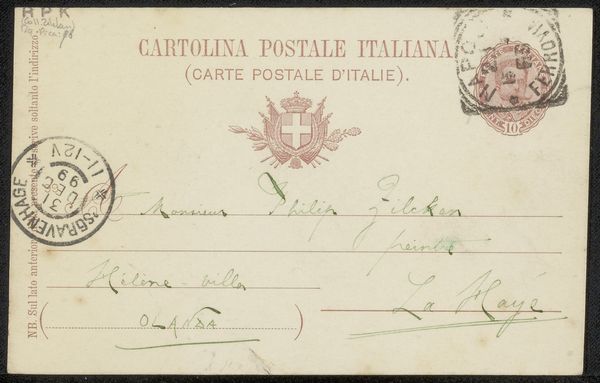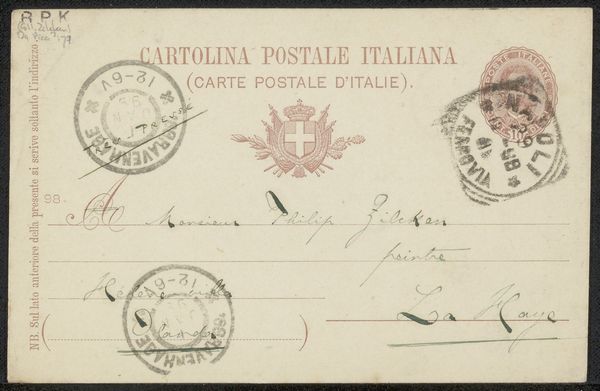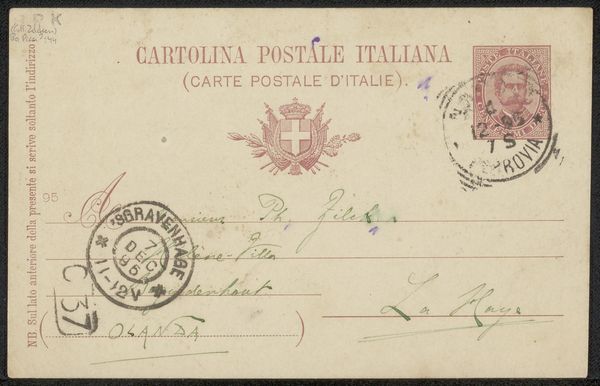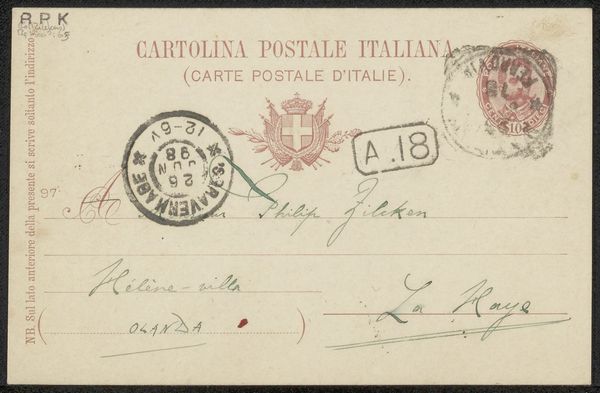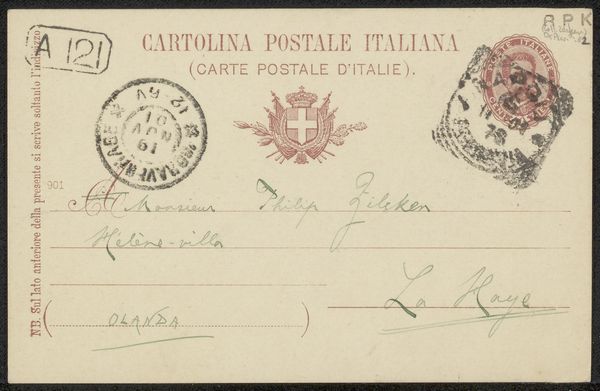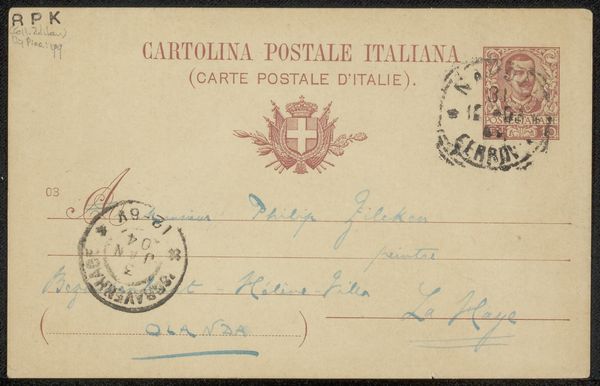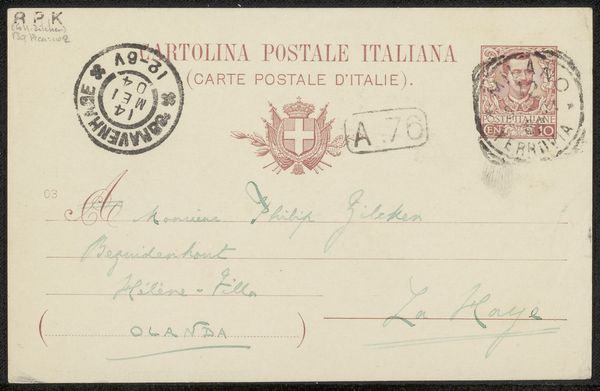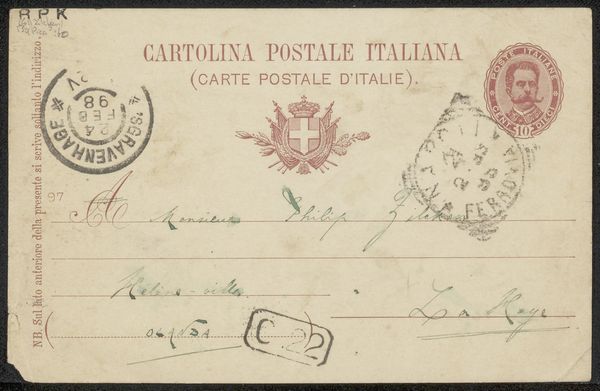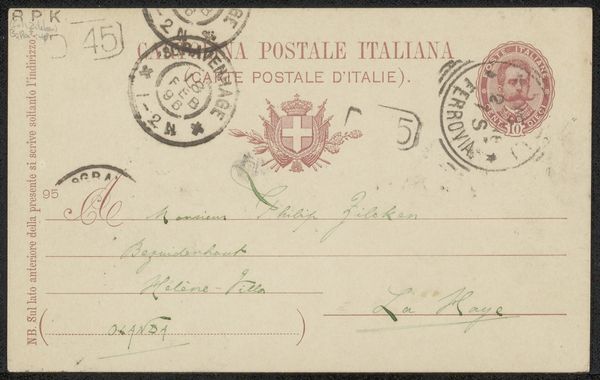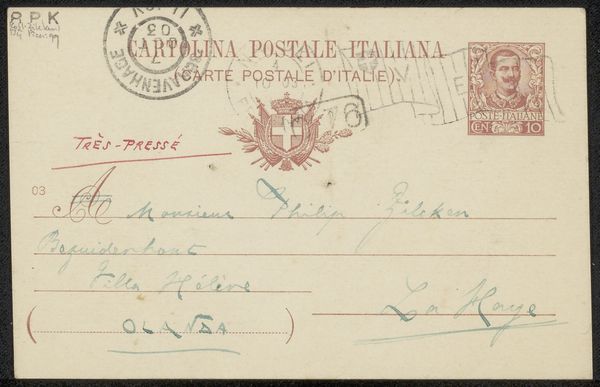
drawing, paper, ink
#
drawing
#
pen sketch
#
old engraving style
#
hand drawn type
#
paper
#
personal sketchbook
#
ink
#
hand-drawn typeface
#
ink drawing experimentation
#
pen-ink sketch
#
pen work
#
sketchbook drawing
#
sketchbook art
#
calligraphy
Copyright: Rijks Museum: Open Domain
Editor: Here we have "Briefkaart aan Philip Zilcken," possibly from 1901, an ink drawing on paper. It looks like a postcard. There's a stamp and hand-drawn lettering. The mood is very antique, like peering into a moment frozen in time. How do you interpret this work? Curator: I see a fascinating intersection of personal and official communication. This postcard isn't just a casual note; it's a document embedded within a network of symbols and bureaucratic markings. Notice the contrast between the delicate, personalized script and the rigid, almost authoritarian, stamps and official emblems of the Italian postal service. Editor: That's interesting. I was focused on the hand-written part, not those Italian symbols! What would they signify? Curator: Well, consider what a postal system represented at the turn of the century – a tool for nation-building, for establishing identity, for connecting individuals across geographical space, but always under the watchful eye, so to speak, of the State. Each stamp, each marking is a claim of ownership, a form of cultural branding, if you will. It suggests national pride and historical significance in this slice of Italian life. Editor: So, it's like the postcard itself becomes a little stage where personal expression and national identity collide? Curator: Precisely. And consider the role of handwriting. It’s deeply personal. How does that intimacy interact with the rather cold, impersonal authority of the postal service? This creates a subtle, yet potent, tension. Even the act of addressing the card becomes significant. Are we seeing an act of connection, of control, or perhaps both? Editor: It gives you a new perspective on the humble postcard. It's more than just a message. It's a cultural artifact. Curator: Indeed. It reminds us that even the most mundane objects are encoded with layers of meaning, reflecting cultural values and historical context. It is a powerful image.
Comments
No comments
Be the first to comment and join the conversation on the ultimate creative platform.
